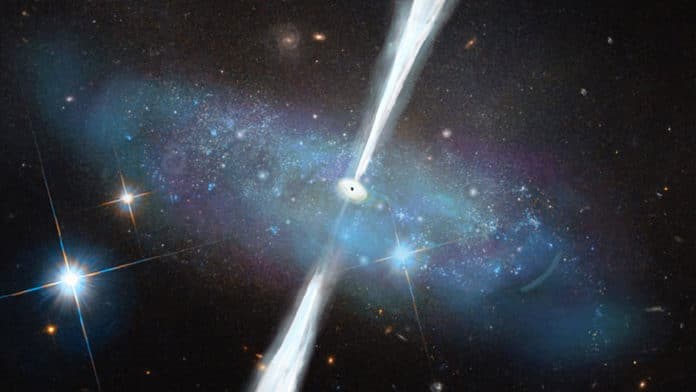The Milky Way is a giant spiral galaxy believed to be made from several smaller dwarf galaxies. Each dwarf galaxy contains a massive black hole, potentially destined to be swallowed by the Milky Way’s central supermassive black hole. However, it remains elusive- how dwarf galaxies contain a massive black hole. This leaves a conundrum in understanding how black holes and galaxies evolve together.
Scientists at Chapel Hill have recently detected a treasure trove of black holes in dwarf galaxies at the University of North Carolina. These black holes are building blocks of supermassive black holes like those in our Milky Way.
The discovery was made by using data for galaxies from REsolved Spectroscopy Of a Local VolumE (RESOLVE) and the Environmental COntext Catalog (ECO). These surveys include ultraviolet and radio data ideal for studying star formation; most astronomical surveys select samples that favor big and bright galaxies, but Kannappan’s surveys are complete inventories of large volumes of the present-day universe in which dwarf galaxies are abundant.
Scientists realized that spectroscopic data used to assess the presence of a growing black hole would often be ambiguous in the same specific way for dwarf galaxies. These galaxies were frequently excluded from surveys, and the ambiguity was overlooked. Although, this ambiguity intrigues scientists. They considered two typical properties of dwarf galaxies – primordial elemental composition (mainly hydrogen and helium) and higher star formation rate – that might resolve the ambiguity in favor of the presence of a growing black hole.
Theoretical simulations provided by Professor Chris Richardson from Elon University confirmed the suspicion that the observed ambiguity is exactly what the simulations predict for a primordial composition, a highly star-forming dwarf galaxy containing a growing massive black hole.
Polymerase search for galaxies that exactly matched the criteria in the surveys was the final step in the research. It discovered that developing, enormous black holes are more abundant in dwarf galaxies than previously thought.
The fact that you can’t see a black hole adds to the difficulty of understanding them. Instead, scientists must monitor black holes based on activity in their immediate vicinity, such as the consumption of matter by gravitational force. However, it can be difficult to distinguish this type of black hole activity from that of bright, young stars.
Polimera said, “We all got nervous. The first question to my mind was: Have we missed a way in which extreme star formation alone could explain these galaxies?”
The answer was a resounding no.
Kannappan said, “We’re left with this shocking result. Mugdha did a masterful job with the data … She has exhaustively researched every other possible explanation.”
“Extraordinary claims require extraordinary evidence. … She spent years exhaustively researching alternative explanations, only to be forced to conclude that the newly identified population of growing massive black holes is real.”
Journal Reference:
- Mugdha S. Polimera, Sheila J. Kannappan et al. RESOLVE, and ECO: Finding Low-metallicity z ∼ 0 Dwarf AGN Candidates Using Optimized Emission-line Diagnostics. DOI: 10.3847/1538-4357/ac6595
